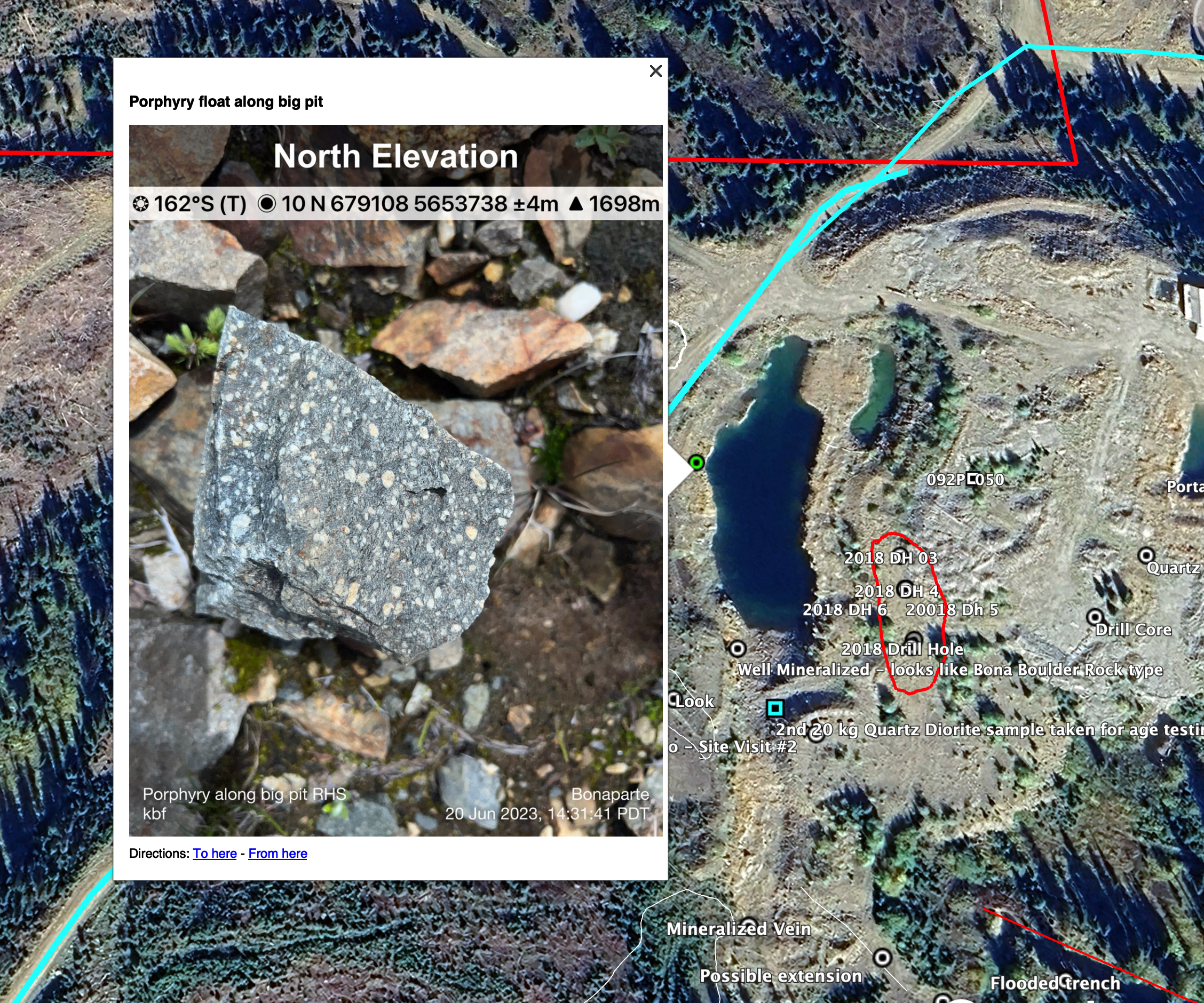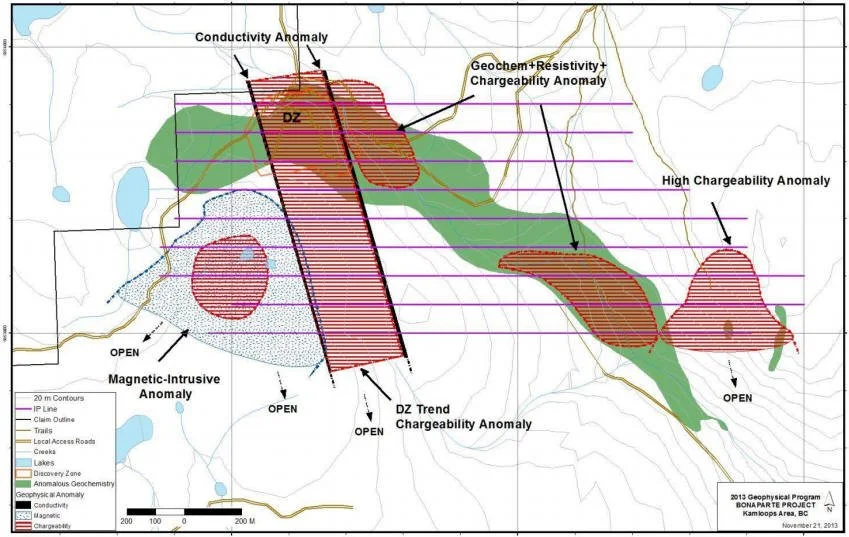BONAPARTE CONTINUED
Another interesting component of the Bonaparte property is that there have been two predominant rock types identified on the property.
The 1st is quartz diorite (porphyry) comprising much of the mineralization found in the near surface gold system.
The 2nd is monzodiorite porphyry.
Two, 20 kg, monzodiorite samples (270m apart) were taken as part of a 2013 Geological Fieldwork report and sent out for U-Pb Zircon Geochronology testing. A 3rd sample of sericite-altered intrusion associated with quartz-carbonate veins and gold mineralization was also sent out for Ar40-AR39 analysis. The testing did prove the two rock types are approximately 23 million years apart in age, and the quartz diorite hosting most of the known gold system is younger than the porphyritic monzodiorite which was initially thought to be the opposite by Logan & Mihalynuk (2012).
Below is a map indicating the locations of the two samples (small, teal-coloured squares). Below that, is a picture of a large monzodiorite porphyry boulder situated not far from the monzodiorite sample location and below that is a picture and location of a Porphyritic float sample from alongside the west side of the large pit.
Although the report did prove the theory the known Bonaparte gold system was not the same age as the Brenda Mine or Woodjam deposits as previously thought by Logan & Mihalynuk, it did prove the known gold system (Middle Jurassic - quartz diorite (porphyry) is approximately (~166Ma) and that the older monzodiorite (Early Jurassic - monzodiorite porphyry) is ~189Ma. How this changes anything, or what this all means, is yet to be determined.
With that said, even though there is no way to determine the age of the geophysical bodies identified and depicted in ARIS 35749 until they can be drilled, if they turn out to be diorite or monzodiorite intrusions, both rock-types have a very good chance of hosting mineralization of one kind or another.
The conclusion to all of this is simple…
Drill, drill and drill again to 500m depth or more if necessary, in attempt to identify and exploit all possibilities for the discovery of Cu/Au Porphyry mineralization. The worst that is likely to happen would be the discovery of additional high-grade quartz gold veins drilling through the top 200+ meters of rock.
This is a good read:
BIG ROCK
Above is a picture of a beautifully mineralized boulder rightly named BIG ROCK, located during a June, 2023 site-visit.
Below are 2 video links from the showing.
The Big Rock 1 Video, showcases the mineralization present withing a 12: quartz vein running through the boulder.
After a closer examination, it was realized the host rock appeared to be mineralized with chalco/ gold across the face and throughout entire the thickness.
The Big Rock 2 Video, showcases this this extraordinary mineralization.
NOTE: Videos are best viewed on a desktop computer with the screen brightness turned up to its fullest extent.
A FEW RANDOM PICTURES, DIAGRAMS & INTERPRETATIONS BELOW













